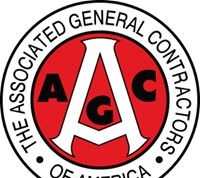WASHINGTON – December 22, 2014 – (RealEstateRama) — Across the country this holiday season, families and friends will gather around fires in woodstoves or fireplaces. But how you build that fire – and what you burn – can have a significant impact on air quality and health, both inside your home and out.
Whether you’re using a woodstove, pellet stove, or your fireplace, seeing smoke from your chimney means your fire isn’t burning efficiently or cleanly as it could.
Woodsmoke contains fine particles – also called fine particle pollution or PM2.5 — which can harm the lungs, blood vessels and heart. People with heart, vascular or lung disease, and older adults and children are more at risk.
Here are some simple tips for building cleaner-burning fires this holiday season:
· Burn only dry, seasoned wood. Wet, or green logs, create excessive smoke – and waste fuel. How do you tell if wood has been seasoned? Listen for a hollow sound when you strike two logs together.
· Wood burns best when the moisture content is less than 20 percent. You can purchase a wood moisture meter to test the moisture content of your wood before you burn it. You can purchase these meters for as little as $20 at most home improvement retailers.
· Start a small fire with dry kindling, then add a few pieces of wood. Be sure there’s space between the pieces of wood – and give the fire plenty of air until it’s roaring.
· A smoldering fire, “dirty” glass doors on a wood stove, or smoke from the chimney are all signs that your fire needs more air – or the wood is too moist.
· Never burn household garbage, cardboard, painted or treated wood, or any wood that contains glue, such as plywood or particle board. These items release toxic chemicals when burned — and if you’re using a woodstove, they can damage it.
· Check your air quality forecast on airnow.gov before you burn. Some local areas limit woodstove and fireplace use under certain air quality conditions.
If you heat your home with wood, using an EPA-certified wood stove can help you save wood while putting less smoke into the air. In January 2014, the agency proposed updates to its requirements for newly manufactured wood heaters that will make new woodstoves, outdoor wood boilers and other wood heaters cleaner in the future. EPA anticipates issuing final requirements by Feb. 3, 2015.
More best burning tips: http://www.epa.gov/burnwise/bestburn.html
Information on the proposed requirements for residential wood heaters: http://go.usa.gov/MbmJ
Contact Information: Jennifer Colaizzi, , 202-564-7776













